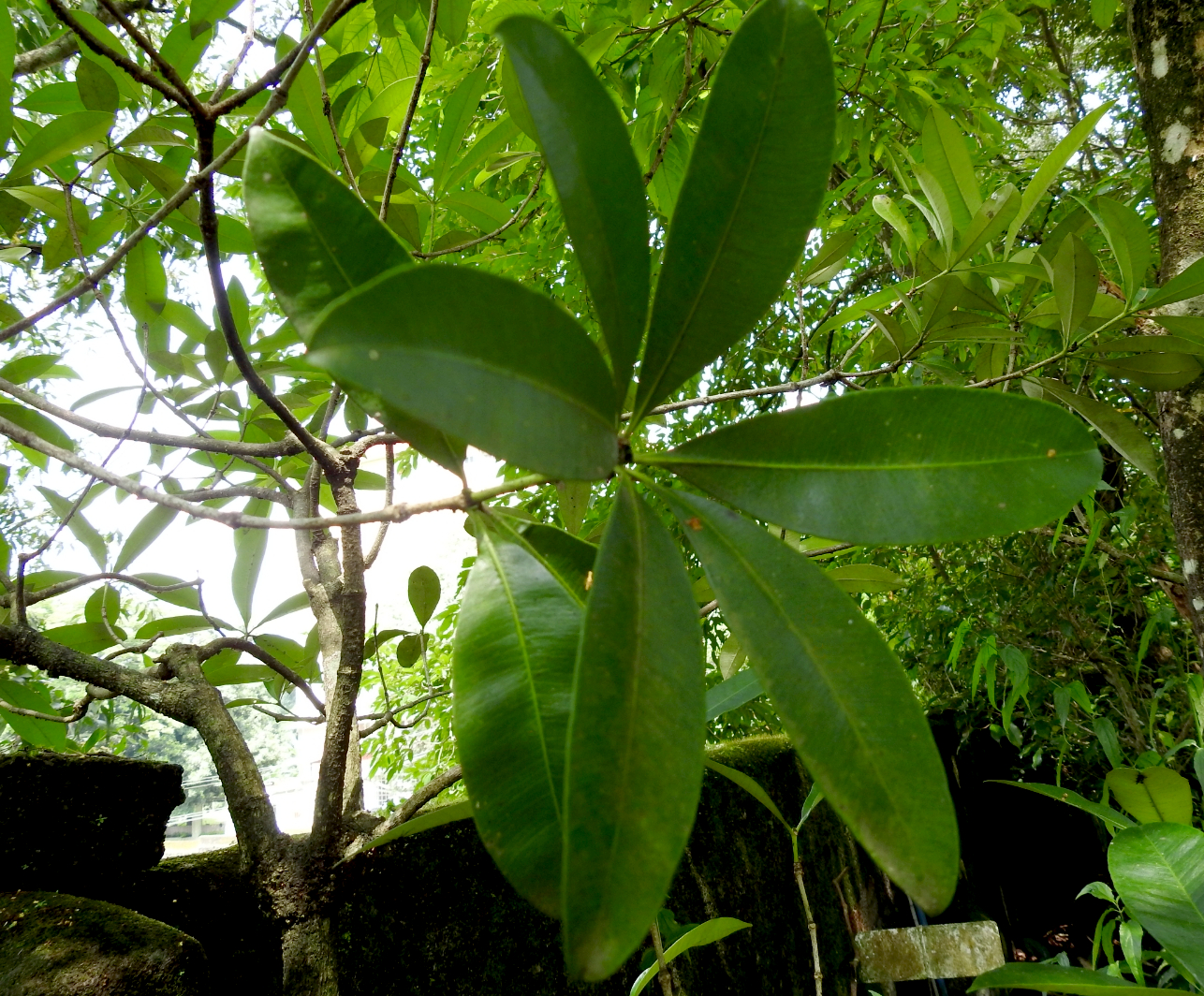Devil tree

Scientific Name :
Alstonia scholaris (L.) R. Br.
Synonym(s) :
Echites scholaris L.
Local/Common name(s) :
Ezhilampala, Devil tree
Family :
Apocynaceae
Habit :
Tree
Flowering/Fruiting Time :
October-February
Habitat :
Moist deciduous forests and sacred groves, also in the plains
Endemic :
No
Status (IUCN) :
Least concern (LC)
Distribution :
South and South East Asia to Australia
Nativity :
Indigenous
Uses :
Medicine
Description (Morphology) :
Large trees; height to 30 m; bark 10-15 mm thick, surface grey-brown, irregularly cracked and shallowly fissured, subverrucose, lenticellate; latex milky white; branchlets whorled. Leaves simple, whorled, 5-20 x 3-7 cm, obovate, oblanceolate or obovate-oblong; apex obtuse or emarginated, base cuneate or attenuate, margin entire, glabrous, subcoriaceous; petiole 5-12 mm long, stout, glabrous; lateral nerves many, slender, prominent, glabrous, parallel, looped near the margin forming intramarginal nerves; intercostae reticulate, obscure. Flower bisexual, 10-12 mm long, greenish-white in terminal umbellate cymes. Calyx cupular, lobes 5, ovate, unequal, obtuse, puberulous, eglandular. Corolla salver shaped, 4 mm across, lobes 5, obovate to orbicular, creamy yellow, spreading. Stamens 5, included; anthers narrowly cordate; disc obscure. Carpels 2, free, ovules many; style filiform; stigma obconic. Fruit of two linear, narrow, pendulous follicular mericarps, green, 30-40 cm long; seeds 5-6 mm long, flat, commate at both ends.

